
A gradual but inevitable descent into cricket-based loathing and bile.
Whither the One-Cap Wonder?
During the 1990s, when the younger versions of the regular 51allout contributors were avidly following cricket via ceefax (RIP) and Wisden Cricket Monthly (RIP) whilst listening to Sophie B. Hawkins (not sure if she’s dead), it seemed as if half the county championship had played for England at some point. Let’s face it, from roughly 1985 onwards, the national team were pretty poor, with performances to be proud of rarely occurring. Accordingly, selection policy during this time was inconsistent to say the least. Hence any semi-decent opening batsman, or ‘traditional English seamer’ had a reasonable chance of getting called up by Ted Dexter or Ray Illingworth. Remember, if you dare, England facing Australia with an opening pair of Martyn Moxon and Tim Curtis (Trent Bridge, 1989; a debutant named Michael Atherton came in at number three). Recall, whilst mopping your salty tears, 23 different players featuring in the 1988 home series against the West Indies.
These days England’s selection policy is largely settled – though in the rise, fall and rise through the rankings from bottom to top there were some dark moments of players being unfairly discarded or sadly injured – and it could be argued that the performancies are generally all the better for it. Incumbents seem to be given the benefit of the doubt, even after poor series, and overall there appears to be much less chopping and changing for the hell of it. On the other hand, the modern international calendar has led to an increase in players being ‘rested’, which is often the only opportunity afforded to fringe players.
This led us to thinking about the one-cap wonders. Our Whatever Happened To The Unlikely Lads series looks generally at those players who were repeatedly given chances before eventually being cast back to the murky waters of county cricket, but the most recent featured Ajmal Shahzad. Following a fairly impressive debut, in which he took match figures of 4/63 against Bangladesh, he injured his ankle and was replaced for the next game. Since then his performances declined and he currently has about as much chance of a call-up as we have of being asked to contribute to the offical IPL Annual 2013.
Frighteningly, many of the utterly bunk players we dearly recall from the past actually played more than once. Mark Lathwell for example, was given two matches against the Australians in 1993 before being thrown on the funeral pyre. The aforementioned Curtis played five matches and incredibly Moxon made it to double figures. But there remain a bunch of players whose chance to shine lasted little longer than the time it took for us young viewers to finish a highland toffee bar. So we decided to have a look back over the decades to see what patterns, if any, emerge.
In the current decade, three players have a solitary appearance: Michael Carberry, James Tredwell and Shahzad. These all played their solitary games against Bangladesh: in the case of Carberry as a stand-in for the absent Andrew Strauss; Tredwell played as a co-spinner alongside Graeme Swann and actually took Carberry’s place in the eleven. Illness prevented Carberry ever being seriously considered again, not that there has been a gap in the side for him to fill. Nonetheless, his recent selection for the Lions suggests he may have a slight chance of adding to his Test scores of 30 and 34. Meanwhile, the resurgence of Monty Panesar and the handful of young spinners coming through the county scene will probably mean Tredders’ England career is behind him.
The above table shows the number of English one-cap wonders per decade. It is safe to assume that the five from the 2000s won’t be featuring again for England, even though we’d happily lose a bollock, arm, eyelash to see Amjad Khan get the call-up again. His motley arsenal of no-balls and four-balls was undoubtedly the highlight of the terrible tour to the Caribbean in 2009. Darren Pattinson meanwhile, seemed to get selected, after no more than 11 first-class appearances, purely on the basis that he was Australian. He replaced the injured Ryan Sidebottom, but was also effectively instead of Matthew Hoggard. We’re still angry about that. Kabir Ali played his solitary Test at home against South Africa in 2003, took 3/80 and 2/56, including the wickets of Gary Kirsten twice and Neil McKenzie, but had to make do with limited-over appearances thereafter, admittedly doing well in the process (incidentally, for the sake of a giggle, the five-man attack for that game was Kirtley, Bicknell, Ali, Anderson and Flintoff).
Of the other two from the previous decade, Jon Lewis can be considered unlucky to have only played once (i.e. fewer than both Saj Mahmood and Liam Plunkett), but at least he didn’t suffer the ignominious fate of being replaced in the side by Plunkett, as Ian Blackwell did.
Going back to those fair and fare summers of our teens, a trend emerges. In 1996, England selected a left-arm seamer to play at Lord’s versus Pakistan (actually, they selected two: Alan Mullally also played); Simon Brown took a wicket in each innings and was promptly dropped. In 1997, England selected a left-arm seamer to play at Headingley versus Australia; Mike Smith didn’t take a wicket in their only innings and was promptly dropped. Earlier in that decade, there had been three players, who each were selected for their debut at the Oval at the end of the particular summer. That none of Neil Williams (1990: his two wickets were Mohammad Azharuddin and Sachin Tendulkar), Joey Benjamin (1994: 4/42 in the match where Devon Malcolm went crazy) or Alan Wells (1995: 0(1) and 3*(39)) were selected again speaks volumes about the selection policy in this era. We should also mention Gavin Hamilton and his quite sensational record of no runs and no wickets in his one match at Johannesburg in 1999.

Who remembers Simon Brown? He was a left-arm seamer, weren't he? Left-arms? Aren't they weird? Anyone here ever tried to bowl with their left-arm?
Looking over those 93 players, all of whom will no doubt be proud of their solitary cap – someone should probably write a proverb about getting picked and dropped being better than never getting picked at all – there are some pretty competent performances included. Nine players recorded a batting average of at least 30; a maximum of two innings is of course not really sufficient to rely on averages, but surely this is deserving of a second chance? Meanwhile, 16 players recorded a bowling average of less than 30, and Tredwell wasn’t far off with six wickets for 30.16. Indeed, only five of this 93-strong club had better figures than the Kent man (two of whom actually took more than ten in the match, Charles Marriott 11/96 and JJ Ferris 13/91; goodness knows what they tweeted about the selectors’ mothers to never be picked again).
It is noteworthy that it is not solely down to the vagaries of the selectors that players finish with just one cap. Norman ‘Buddy’ Oldfield scored 80 against the West Indies one August; within a few weeks the world was at war and by 1946, Oldfield was playing league cricket. Andy Lloyd famously debuted against the likes of Malcolm Marshall in 1984 and lasted barely half an hour before being smashed on the head and spending the rest of the match (and his Test career) in hospital. Fred Grace, one of WG’s younger brothers, debuted at the Oval on 6th Septemeber 1880; within three weeks he was dead: pneumonia caught from a damp mattress.
If we were to offer a conclusion, it would be not to start an article without really knowing what the underlining message will be. Frankly, the sample of matches and the myriad reasons for selecting players (or not selecting players, as the case may be) means it is impossible to identify correlation between a team’s performances and the frequency of one-cap wonders – especially as we’ve lost the instruction manual for our scientific calculator. What the raw figures in the above table do show however, was that in the period when England were pretty good (the ’50s and ’60s), there were few players only picked once, whereas in the gloom of the ’80s and ’90s, it was a much more regular occurence. We’ll try to return to this theme in the future by looking at other countries such as Australia (paging Matt L), where we will at least be able to state for certain that Stuart Law, had he been born in Bristol rather than Brisbane, would have more than one Test cap on his mantelpiece. One day, we might even get around to referring to Andy Ganteaume and his Bradman-beating average, probably in comparison with Shannon Gabriel, the most recent member of this weird and wonderful club.
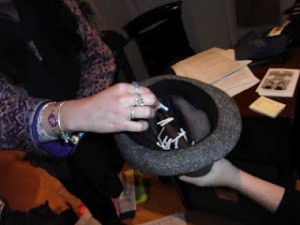
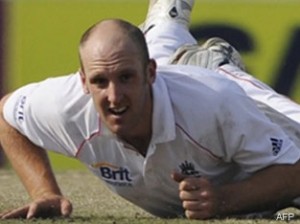
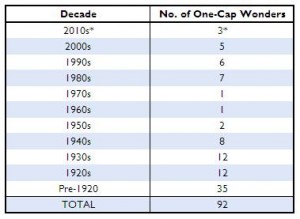
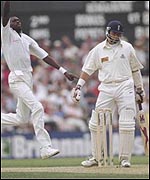
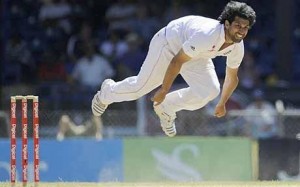

1 Comment
Post a Comment
1
Jack
29 May 2012 13:02
I will never forgive the selectors for what they did to Hoggard when Pattinson got picked. It was at Headingley as well ffs.